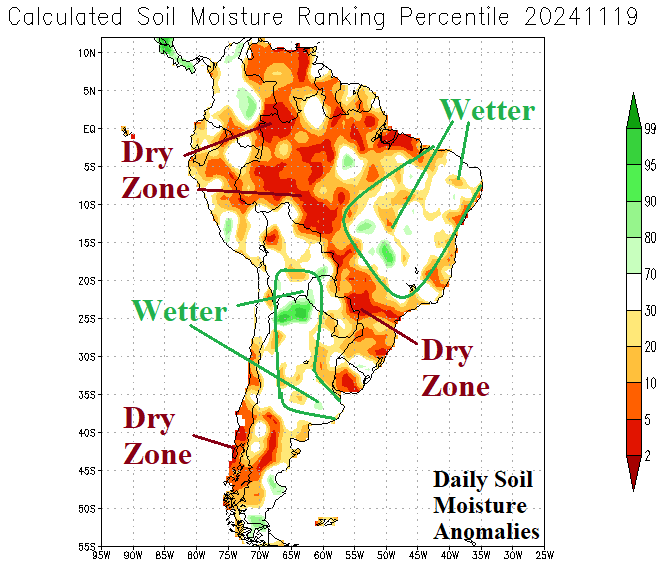
MJO-inspired Drier Brazil Climate into Middle December
11/18/2024, 5:40 am EST
PJM/SERC Hit by Significant Heating Demand Nov. 29-Dec. 5
11/24/2024, 3:11 pm ESTExecutive Summary: The Climate Impact Company Summer 2024-25 Climate Outlook for South America is updated. The outlook maintains strongest risk of anomalous heat and dryness across Argentina and Central/Northeast Brazil. The wet zone is confined to the south-central coastal region of Brazil. Wet weather is also likely across northern continent. Drought is forecast to regenerate in Argentina and continue in southwest to northeast Brazil plus far southeastern Brazil. Climate contributors to the outlook include neutral ENSO to borderline La Nina, an emerging marine heatwave off the Argentina Coast, and persistence of the positive phase Atlantic meridional mode (+AMM).
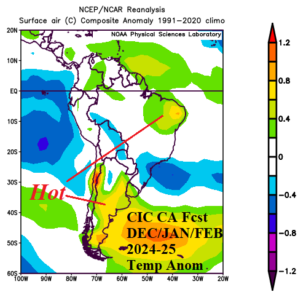
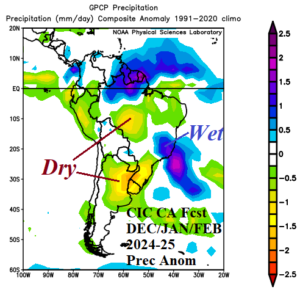
Fig. 1-2: The Climate Impact Company constructed analog DEC/JAN/FEB 2024-25 temperature and precipitation anomaly forecast.
Climate discussion: During mid-to-late spring, rainfall has eased drought in Central to East/Northeast Brazil and North/Northeast Argentina (Fig. 3). Drought conditions remain intact across West, Southwest, and Interior Southeast Brazil.
The SSTA pattern reveals neutral ENSO as reluctance for La Nina development continues (Fig. 4). The Southeast Pacific is generally cooler than normal. The record warm tropical South Atlantic (+TSA) index of last year has dissipated.
The Atlantic meridional mode (AMM) is in the positive phase causing a push of anomalous warm water to the north of the equator. The +AMM pattern pushes the North Atlantic ITCZ farther north leaving north/northeast portions of Brazil on the dry subsidence side of the convection.
Off the East Coast of South America, a marine heat wave (MHW) is developing. During summertime, a large MHW has a controlling influence on where the semi-permanent South Atlantic subtropical high-pressure area aligns.
The majority of global SSTA forecasts project La Nina for DEC/JAN/FEB 2024-25. Climate Impact Company doubts La Nina development and prefers neutral ENSO for meteorological summer which leads to lower forecast confidence for the summer 2024-25 outlook. The SSTA forecasts maintain a weaker +AMM pattern which supports a dry northeast continent climate for summertime. The MHW off the Argentina Coast is forecast to expand and strengthen and will control the location of the South Atlantic semi-permanent subtropical high-pressure area.
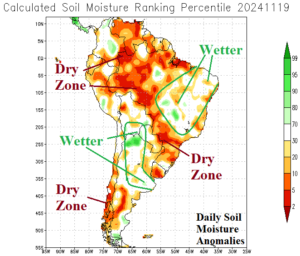

Fig. 3-4: Daily soil moisture anomalies across South America according to NOAA/CPC and the weekly global SSTA analysis.
December 2024: Upper trough is projected over Southeast Brazil. Feature is causal to wet weather suppressing heat risk on the central/south-central Brazil East Coast. Away from this wet/cool zone, drier and hotter than normal climate is (mostly) dominant. Northeast Argentina and Northeast Brazil dryness are most prominent.
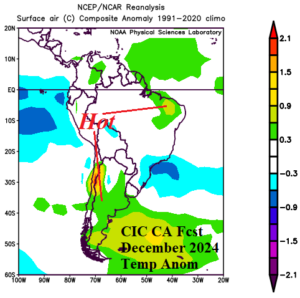
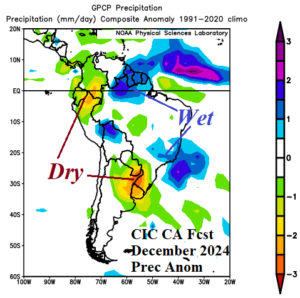
Fig. 5-6: The preliminary Climate Impact Company constructed analog temperature and precipitation forecast for December 2024.
January 2025: The upper trough persists, budging westward to Northern Argentina for mid-summer. While the upper trough spawns heavy rain over Paraguay, compensating subsidence dries the northern 2/3 of Brazil and coupled with anomalous heat drought redevelops and expands. Northeast Argentina is dry and hot.
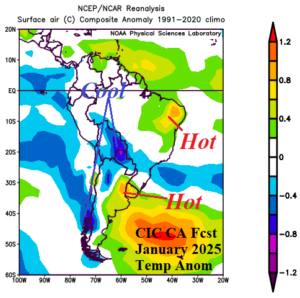
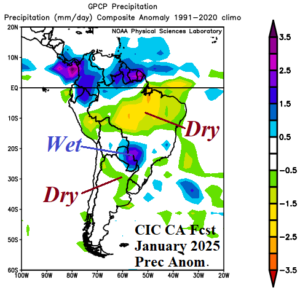
Fig. 7-8: The Climate Impact Company constructed analog temperature and precipitation forecast for January 2025.
February 2025: The resilient upper trough shifts to the Southeast Brazil Coast during late meteorological summer. The upper trough spawn wet weather on the Southeast Brazil Coast. The wet weather expands northward across northeastern Brazil easing a bad drought in that region. In February, the (very) dry zone is Argentina where anomalous heat enhances drying of soils.
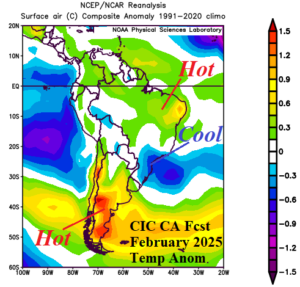
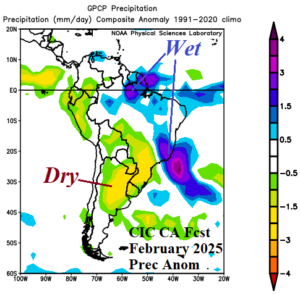
Fig. 9-10: The Climate Impact Company constructed analog temperature and precipitation forecast for February 2025.
March 2025: The semi-permanent upper trough near Southeast Brazil during the summer 2024-25 season is gone in March. A weak upper ridge is centered on Northern Argentina fueling a hotter and drier than normal climate from Central Argentina to Eastern Brazil.
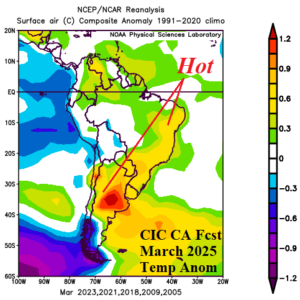
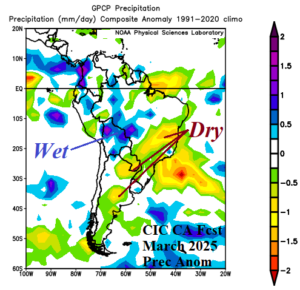
Fig. 11-12: The Climate Impact Company constructed analog temperature and precipitation forecast for March 2025.

